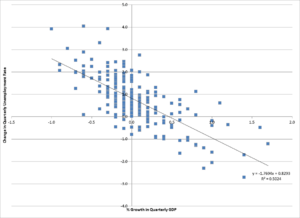Econometrics facts for kids
Econometrics is a branch of economics. It is the use of statistical and mathematical methods to describe the relation between economic forces such as capital (any of the tools, work, or other things needed to make something useful), interest rates (the price of borrowing money), and labor.
Much of econometrics is making models which are simple pictures of the real world. These models then can be used to predict what will happen in the real world.
An example of econometrics would be looking at the prices of houses in a town. An economist (someone who studies economics) can try to make a simple picture of the house prices in the town. This picture might show that houses close to the market are worth more. An economist could then say that if a new market is made in another part of the town, home prices there might go up. The economist also might say that the new market could make prices less than before near the old one, because the new market will make it so that more houses are near a market. This would make the people who sell houses near a market sell them for less, since there could be more sellers than buyers.
Basic model: linear regression
A basic tool for econometrics is the multiple linear regression model. In modern econometrics, other statistical tools are often used, but linear regression is still the most used starting point for an analysis. Estimating a linear regression on two variables can be shown by drawing a line through data points representing paired numbers of the independent and dependent variables.
See also
 In Spanish: Econometría para niños
In Spanish: Econometría para niños


